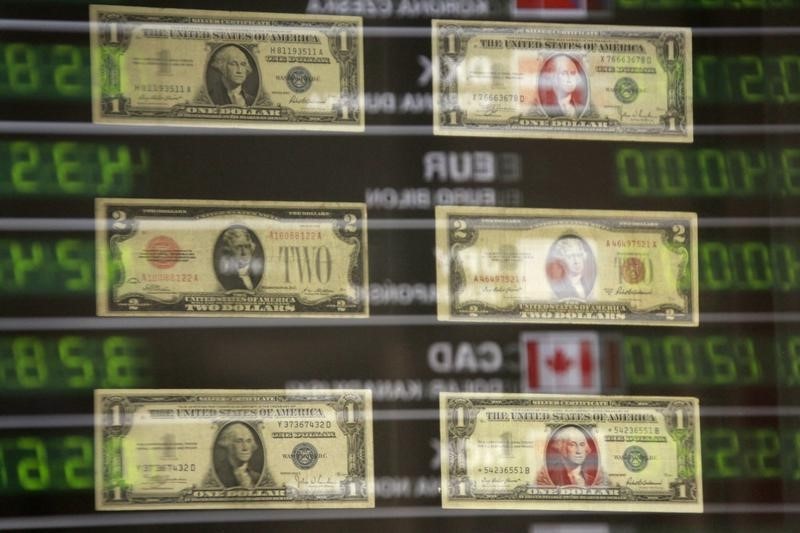* Canadian dollar at C$1.3267, or 75.37 U.S. cents
* Bond prices higher across the maturity curve
(Adds details, quotes, updates prices)
TORONTO/OTTAWA, March 14 (Reuters) - The Canadian dollar
weakened against its U.S. counterpart on Monday as crude oil
slipped back below $40 a barrel and investors braced for policy
decisions from the U.S. Federal Reserve and other central banks.
Oil fell around 3 percent after Iran dashed hopes of a
coordinated production freeze any time soon, returning bearish
sentiment to the market over a supply glut that has sent prices
crashing. O/R
The Canadian dollar, which is highly sensitive to the price
of oil, fell back from the four-month high it had touched on
Friday.
Nonetheless, the currency did not weaken as much as might
have been expected given the slump in crude, said Amo Sahota,
director at Klarity FX in San Francisco.
"Just on how much oil has moved, we haven't seen a full
correlation with the loonie itself," said Sahota. "It went along
for the journey, then decided it's going to stop."
The Canadian dollar CAD=D4 ended the North American
trading session at C$1.3267 to the greenback, or 75.37 U.S.
cents, weaker than the Bank of Canada's official close on Friday
of C$1.3231, or 75.58 U.S. cents.
The currency's strongest level of the session was C$1.3213,
while its weakest level was C$1.3279.
The Bank of Japan, the Fed, the Bank of England and the
Swiss National Bank will all update their policies this week,
after the European Central Bank last week cut interest rates,
extended its asset-purchase program and pledged new cheap loans
for banks.
The Canadian dollar, which has appreciated significantly
since a Bank of Canada decision in January to hold rates steady
rather than cut, could face pressure if the Fed reaffirms a
hiking bias on Wednesday.
"Part of us feels like U.S. dollar-Canadian dollar is due a
decent rally," said Sahota. "If oil falters and the Fed remains
relatively hawkish ... that might just give it enough excuse to
try to squeeze U.S. dollar-Canadian dollar higher."
The domestic economic calendar was light, with the main
report showing a rise in Canadian home prices in February that
was driven by the robust market in Vancouver.
Canadian government bond prices were higher across the
maturity curve, with the two-year CA2YT=RR price up 2 Canadian
cents to yield 0.583 percent and the benchmark 10-year
CA10YT=RR rising 7 Canadian cents to yield 1.355 percent.
The Canada-U.S. two-year bond spread was -37.7 basis points,
while the 10-year spread was -61.1 basis points.
